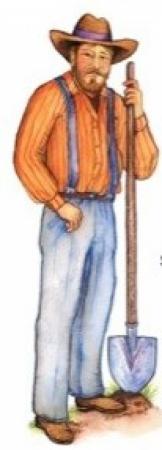The Man Who Moved a City
By Bill Ward
As a community we often celebrate courage. A good example of courage from our city’s history is that shown by early pioneer Noah Parks. Parks enlisted in the Pennsylvania military in 1861 not once, but twice, first with the 15th Regiment, Pennsylvania Infantry. When that disbanded, he joined the 9thRegiment, Pennsylvania Cavalry. The action list of those regiments was extensive, with engagements against the confederacy all over the central US.
After the war, Parks found his way to the north Collinwood Lake area, where other family members lived. He bought land and married Matilda Bogar.
In 1868, after he was all settled in, along came some gentlemen from the Saint Paul and Pacific Railroad looking for land. They had surveyed a route west from the Cities that went right through the village of Collinwood, a growing and thriving little enclave on the north shore of the lake with a flour mill, hotel, store, post office and other businesses.
Noah’s neighbors were anxious to sell. However, Noah said, “No.” No amount of coaxing from his neighbors could persuade him. That courage he had shown earlier now came out as stubbornness.
In frustration, those railroad men left town. They redrew their map and moved the railroad, not too far, just one mile north. There they were successful at purchasing the land they needed. There they platted out a new village, naming it Dassel after one of their own employees.
Noah Parks was no doubt pleased with himself for besting the railroad. His neighbors were not so pleased as they watched their town disappear. The commerce and community life had moved north with the railroad.
Today, almost nothing remains of the village of Collinwood, while the City of Dassel thrives. It is all thanks to the stubborn veteran from Pennsylvania, the man who moved a city. (Parks luck ran out in 1872, when at the age of 36 he was taken by tuberculosis. Dassel residents pass his grave in the Dassel Cemetery regularly, second section from the south end, fifth row off the highway about in the center. Give him a salute next time you pass.)
Information from Those Were the Days by Oscar Linquist, the National Park Service Civil War Soldiers and Sailors System, and Ancestry.com.

